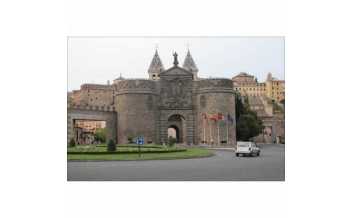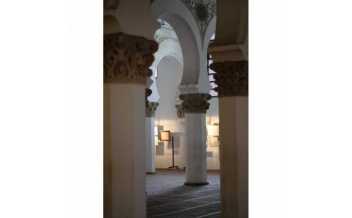« The street of Toledo are extremely narrow : we could hold hands from one window to another » -Théophile Gautier
Toledo is one of Spain’s oldest and most unique cities and is just an hour from Madrid. It was made a World Heritage Site in 1986.
It was known as the “Imperial City” because Charles V, the Holy Roman Emperor held his court there until 1560 when it was moved to Madrid. You may also hear it called the “City of Three Cultures” because it was inhabited by, and influenced by Christians, Jews and Muslims. This compact city, which was Spain’s capital until 1560, is bursting with history, cultural festivals and authentic food.
Toledo’s historic centre is full of ancient landmarks. Make sure you don’t miss the huge Alcázar stone fortification, or Toledo’s Cathedral, the Primate Cathedral of Saint Mary of Toledo.
Make sure you try some of Toledo’s marzipan which is famous for the way it’s cut into animal shapes such as pigs and bears, or get your own souvenir sword at one of Toledo’s souvenir shops!
Activities
-
Alcantara Bridge, Toledo, Spain
Spanning the length of the Tagus River in Toledo, this arched Roman bridge...
-
Alcázar de Toledo, Toledo, Spain
The Alcázar of Toledo is a stone fortification in the highest part of the...
-
Army Museum, Toledo, Spain
The Army Museum of Toledo was opened in 2010 and is located inside the...
-
Historic City of Toledo, Spain
Toledo is just one hour south of the capital city Madrid. It is a historic...
-
Iglesia de Santo Tomé, Toledo, Spain
Located in the historical centre of Toledo, this 12th-century Christian...
-
Mirador del Valle, Toledo
To get a picture-perfect view of Toledo, you cannot miss a visit to this...
-
Monasterio de San Juan de los Reyes, Toledo
This site was built in the heart of the Jewish quarter by Catholic Monarchs...
-
Museo del Greco, Toledo
The museum was opened in Toledo’s Jewish quarter in 1911 to celebrate the...
-
Museo del Queso Manchego, Toledo, Spain
Check out this great culinary stop-over in the heart of the Historic Quarter...
-
Puerta de Bisagra, Toledo
Toledo is a heavily fortified, walled city with many different city gates.
-
San Martin's Bridge, Toledo
Wander along this pedestrian bridge to get a great view of Toledo and the...
-
Sinagoga de Santa María La Blanca, Toledo
The synagogue, now a museum, is a Mudéjar construction built by Moorish...

















